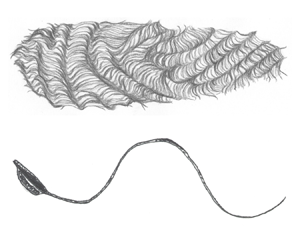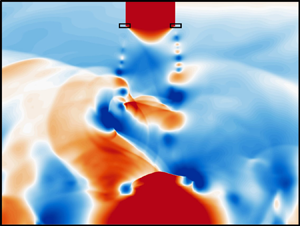Refine listing
Actions for selected content:
1419606 results in Open Access
THEOCRITUS AND SPACE - (W.G.) Thalmann Theocritus. Space, Absence, and Desire. Pp. xxii + 232. New York: Oxford University Press, 2023. Cased, £54, US$83. ISBN: 978-0-19-763655-8.
-
- Journal:
- The Classical Review / Volume 74 / Issue 1 / April 2024
- Published online by Cambridge University Press:
- 27 December 2023, pp. 81-83
- Print publication:
- April 2024
-
- Article
- Export citation
Opportunistic observation effort and seasonal-spatial fidelity: a qualitative approach, applied to an Orcinus orca first record
-
- Journal:
- Journal of the Marine Biological Association of the United Kingdom / Volume 103 / 2023
- Published online by Cambridge University Press:
- 27 December 2023, e98
-
- Article
- Export citation
Quantifying racial disparities in risk of invasive Staphylococcus aureus infection in Metropolitan Atlanta, Georgia, during the 2020–2021 coronavirus disease 2019 (COVID-19) pandemic
-
- Journal:
- Infection Control & Hospital Epidemiology / Volume 45 / Issue 4 / April 2024
- Published online by Cambridge University Press:
- 27 December 2023, pp. 534-536
- Print publication:
- April 2024
-
- Article
-
- You have access
- Open access
- HTML
- Export citation
Sink-traps are a major source for carbapenemase-producing Enterobacteriaceae transmission
-
- Journal:
- Infection Control & Hospital Epidemiology / Volume 45 / Issue 3 / March 2024
- Published online by Cambridge University Press:
- 27 December 2023, pp. 284-291
- Print publication:
- March 2024
-
- Article
- Export citation
Methodological approaches to assessing population-level impacts of bird collisions with wind turbines: a critical perspective
-
- Journal:
- Environmental Conservation / Volume 51 / Issue 1 / March 2024
- Published online by Cambridge University Press:
- 27 December 2023, pp. 1-5
-
- Article
-
- You have access
- HTML
- Export citation
Pricing and hedging of longevity basis risk through securitisation
-
- Journal:
- ASTIN Bulletin: The Journal of the IAA / Volume 54 / Issue 1 / January 2024
- Published online by Cambridge University Press:
- 27 December 2023, pp. 159-184
- Print publication:
- January 2024
-
- Article
- Export citation
Patient factors and geographic barriers influencing excess time between paediatric and adult CHD care
-
- Journal:
- Cardiology in the Young / Volume 34 / Issue 6 / June 2024
- Published online by Cambridge University Press:
- 27 December 2023, pp. 1218-1225
-
- Article
-
- You have access
- Open access
- HTML
- Export citation
Chest pain due to coronary artery compression in an adult with CHD
-
- Journal:
- Cardiology in the Young / Volume 34 / Issue 2 / February 2024
- Published online by Cambridge University Press:
- 27 December 2023, pp. 452-454
-
- Article
-
- You have access
- Open access
- HTML
- Export citation
INTERSECTING THE TORSION OF ELLIPTIC CURVES
- Part of
-
- Journal:
- Bulletin of the Australian Mathematical Society / Volume 110 / Issue 1 / August 2024
- Published online by Cambridge University Press:
- 27 December 2023, pp. 56-63
- Print publication:
- August 2024
-
- Article
- Export citation
Paraneoplastic Anti-Neuronal Nuclear Antibody Type 3 Neurologic Autoimmunity
-
- Journal:
- Canadian Journal of Neurological Sciences / Volume 51 / Issue 6 / November 2024
- Published online by Cambridge University Press:
- 27 December 2023, pp. 874-876
-
- Article
-
- You have access
- Open access
- HTML
- Export citation
Passive acoustic monitoring detects new records of globally threatened birds in a high-elevation wetland (Free State, South Africa)
-
- Journal:
- Bird Conservation International / Volume 33 / 2023
- Published online by Cambridge University Press:
- 27 December 2023, e80
-
- Article
-
- You have access
- Open access
- HTML
- Export citation
Multi-linear forms, graphs, and
 $L^p$-improving measures in
$L^p$-improving measures in  ${\Bbb F}_q^d$
${\Bbb F}_q^d$
- Part of
-
- Journal:
- Canadian Journal of Mathematics / Volume 77 / Issue 1 / February 2025
- Published online by Cambridge University Press:
- 27 December 2023, pp. 208-251
- Print publication:
- February 2025
-
- Article
- Export citation
M. Berg and P. Hudson, Slavery, Capitalism and the Industrial Revolution (London: Polity Press, 2023). Pages ix + 288 + figures 8 + tables 13. £25 hardback
-
- Journal:
- Continuity and Change / Volume 39 / Issue 1 / May 2024
- Published online by Cambridge University Press:
- 27 December 2023, pp. 127-128
- Print publication:
- May 2024
-
- Article
- Export citation
Meritocracy as Authoritarian Co-Optation: Political Selection and Upward Mobility in China
-
- Journal:
- American Political Science Review / Volume 118 / Issue 4 / November 2024
- Published online by Cambridge University Press:
- 27 December 2023, pp. 1856-1872
- Print publication:
- November 2024
-
- Article
-
- You have access
- Open access
- HTML
- Export citation
Eukaryotic swimming cells are shaped by hydrodynamic constraints
-
- Journal:
- Journal of Fluid Mechanics / Volume 978 / 10 January 2024
- Published online by Cambridge University Press:
- 27 December 2023, R1
-
- Article
- Export citation
Faunal and paleoenvironmental changes at a Cambrian (Jiangshanian; Steptoean–Sunwaptan boundary interval) trilobite extinction event, in contrasting deep- and shallow-subtidal settings, Nevada and Oklahoma
-
- Journal:
- Journal of Paleontology / Volume 98 / Issue 4 / July 2024
- Published online by Cambridge University Press:
- 27 December 2023, pp. 584-611
-
- Article
-
- You have access
- Open access
- HTML
- Export citation
On the root of unity ambiguity in a formula for the Brumer–Stark units
- Part of
-
- Journal:
- Canadian Mathematical Bulletin / Volume 67 / Issue 3 / September 2024
- Published online by Cambridge University Press:
- 27 December 2023, pp. 611-623
- Print publication:
- September 2024
-
- Article
- Export citation
Preventive effects of caffeine on nicotine plus high-fat diet-induced hepatic steatosis and gain weight: a possible explanation for why obese smokers with high coffee consumption tend to be leaner
-
- Journal:
- British Journal of Nutrition / Volume 131 / Issue 8 / 28 April 2024
- Published online by Cambridge University Press:
- 27 December 2023, pp. 1342-1351
- Print publication:
- 28 April 2024
-
- Article
-
- You have access
- HTML
- Export citation
A data-driven approach to guide supersonic impinging jet control
-
- Journal:
- Journal of Fluid Mechanics / Volume 978 / 10 January 2024
- Published online by Cambridge University Press:
- 27 December 2023, R2
-
- Article
- Export citation
On local isotropy and scale dependence of pair dispersion in turbulent canopy flows
-
- Journal:
- Journal of Fluid Mechanics / Volume 978 / 10 January 2024
- Published online by Cambridge University Press:
- 27 December 2023, A3
-
- Article
-
- You have access
- Open access
- HTML
- Export citation






























